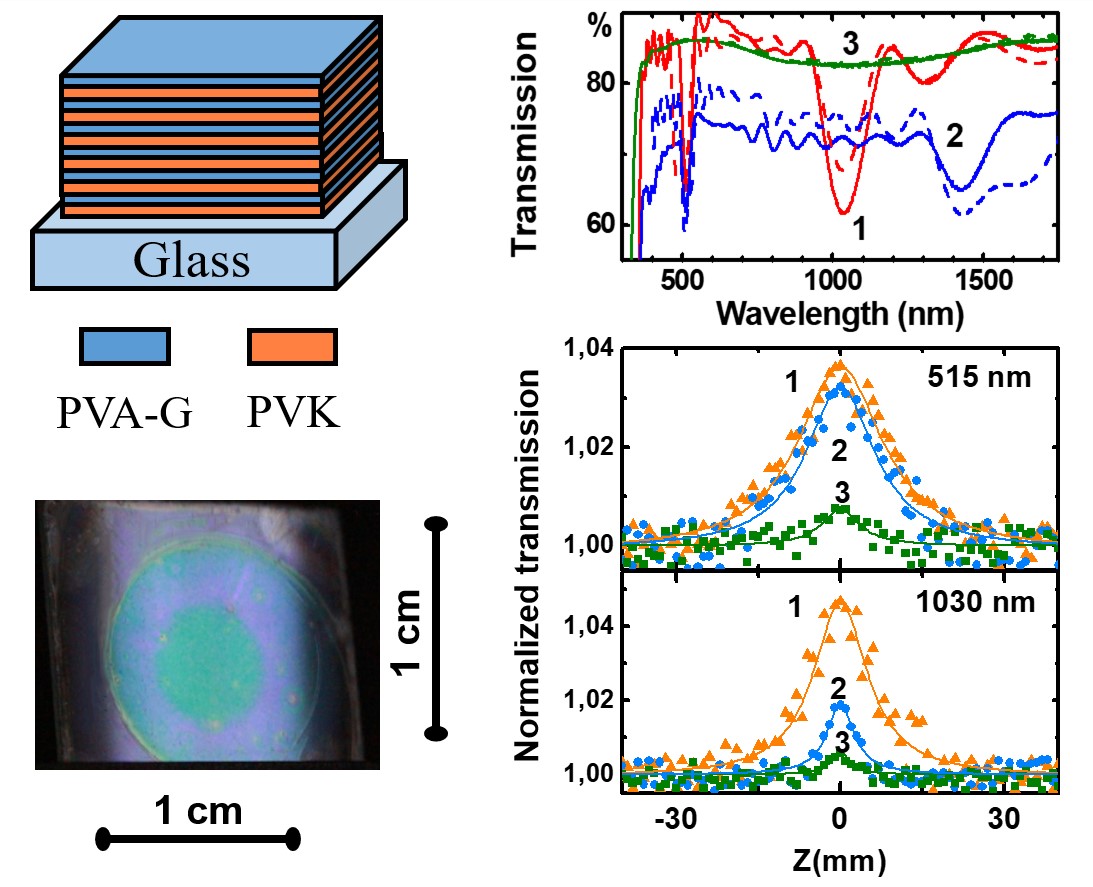The unique mechanical, chemical, electronic and photonic features of graphene are attracting much attention, especially its unusual nonlinear optical (NLO) properties, making it a progressive solution to ultrafast saturable absorption and optical limiting. However, small NLO coefficient in natural materials restricts its applications due to high-intensity thresholds. Embedding NLO materials in a photonic crystal (PC) can yield lower NLO thresholds than bulk materials, making it an exciting NLO device again.
Recently, a study led by Prof. WANG Jun from Shanghai Institute of Optics and Fine Mechanics, Chinese Academy of Sciences, proposed a simple and accessible technology for PC manufacturing and presented a PC1 designed for infrared and visible λ pairs, suitable for the two harmonics of a standard laser source: 1030/515 nm. The result was published in Optics Letters.
Their study was based on the polymer dispersion of graphene flakes. To prepare the crystal, graphene was first suspended using the liquid phase exfoliation method. Then the 1D PCs consisting 12 alternating layers of poly(9-vinylcarbazole) (PVK) and of graphene-based poly(vinyl-alcohol) (PVA) nanocomposite was spin coated on a glass substrate. In order to compare the NLO response of graphene in PC with partially resonant and non-resonant cases, PC2 crystal and a pure PVA-G film were fabricated. In PC1 structure, two bandgaps near 515 nm and 1030 nm were observed. For PC2, the second bandgap fell on 1425 nm, which deprived the possible advantage at 1030 nm.
NLO properties of the three samples were studied using an open-aperture Z-scan setup with 340 fs pulses at the main (1030 nm) and second (515 nm) harmonics of a fiber laser. More pronounced saturable behavior with significant enhancement of the nonlinear absorption coefficient and the imaginary part of the third-order nonlinear susceptibility was obtained in the PC structures as compared to the bulk PVA-G film.
Their experiment also showed a remarkable decrease of saturable absorption threshold and saturation intensities of graphene embedded in the PC in comparison with the bulk PVA-G. The saturable absorption enhancement factor reached 7 in the visible and 8 in the infrared, which could be explained by the combination of light field enhancement and absorptive and scattering losses inside the structures.
This work provides a desirable solution for an advanced all-optical laser mode-locking device.
This work was supported by the Chinese National Natural Science Foundation, the Strategic Priority Research Program of CAS, the Key Research Program of Frontier Science of CAS, and the Program of Shanghai Academic Research Leader.

Fig. 1 Structure, picture, measured and calculated linear transmission spectra of the spin-coated PC1 (line 1), PC2 (line 2) and PVA-G (line 3). Open-aperture Z scan results of these PC samples. (Image by SIOM)
Related website:
https://www.osapublishing.org/ol/abstract.cfm?uri=ol-44-19-4785&origin=search
Contact:
Mr. Cao Yong
General Administrative Office
Shanghai Institute of Optics and Fine Mechanics, CAS
Email: caoyong@siom.ac.cn